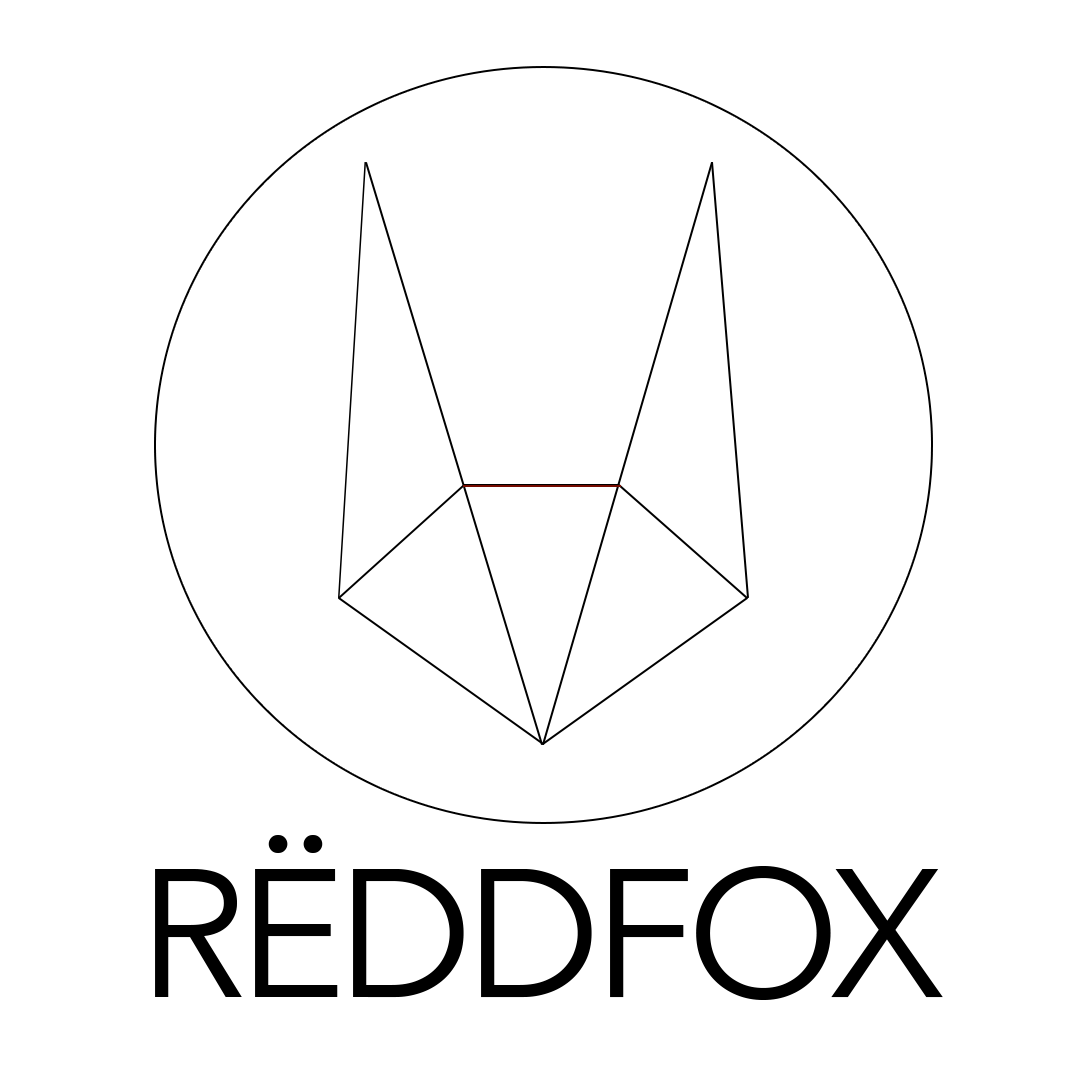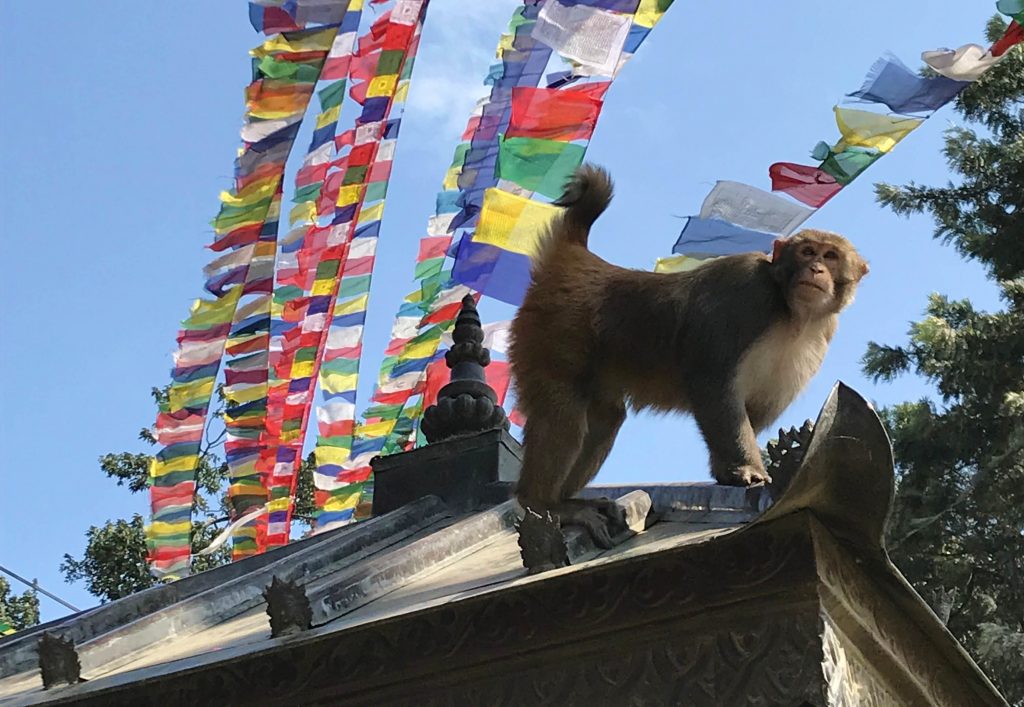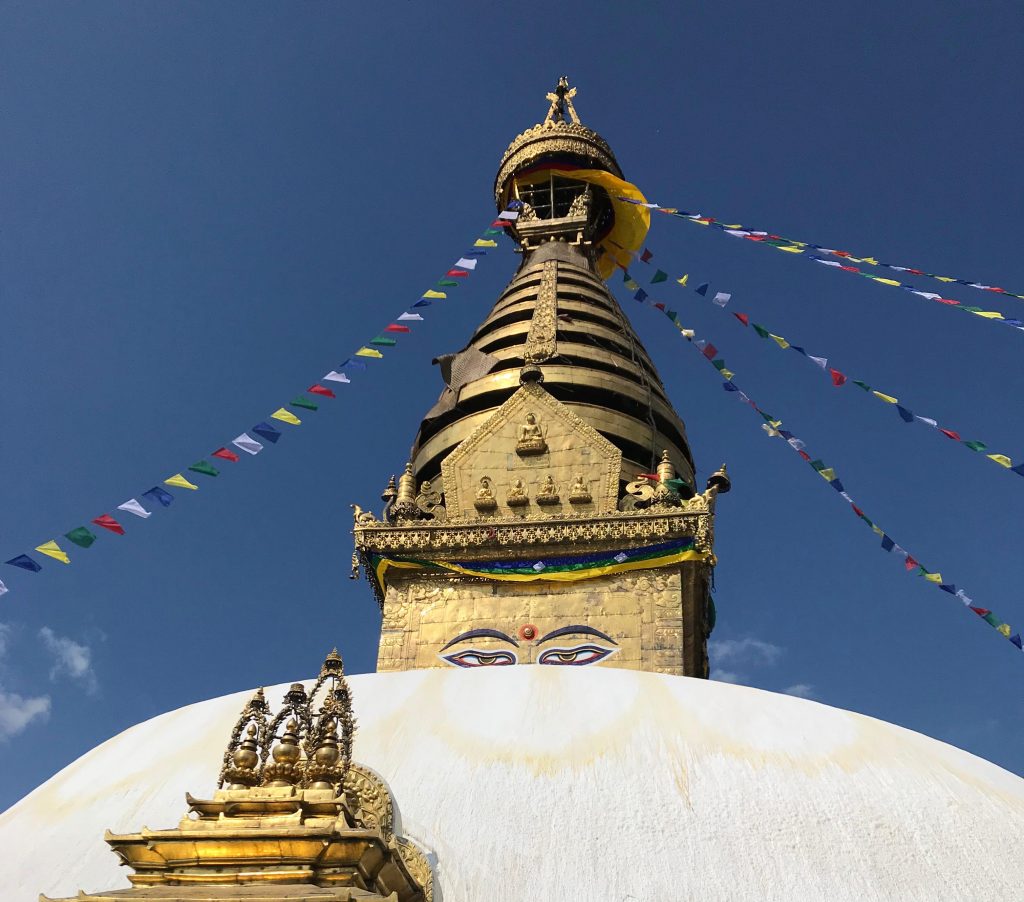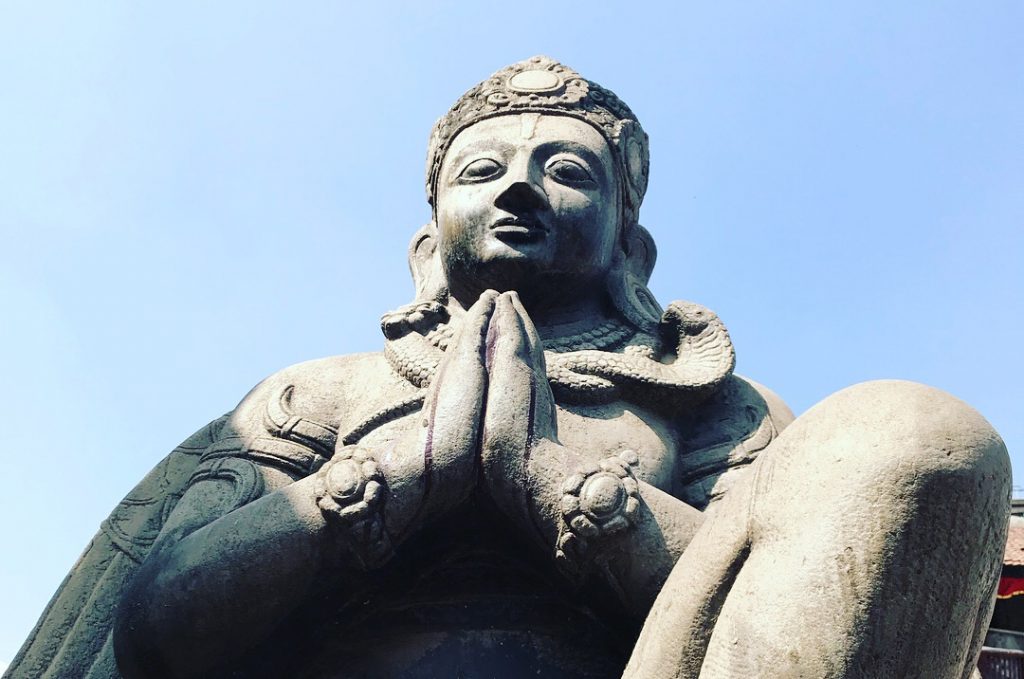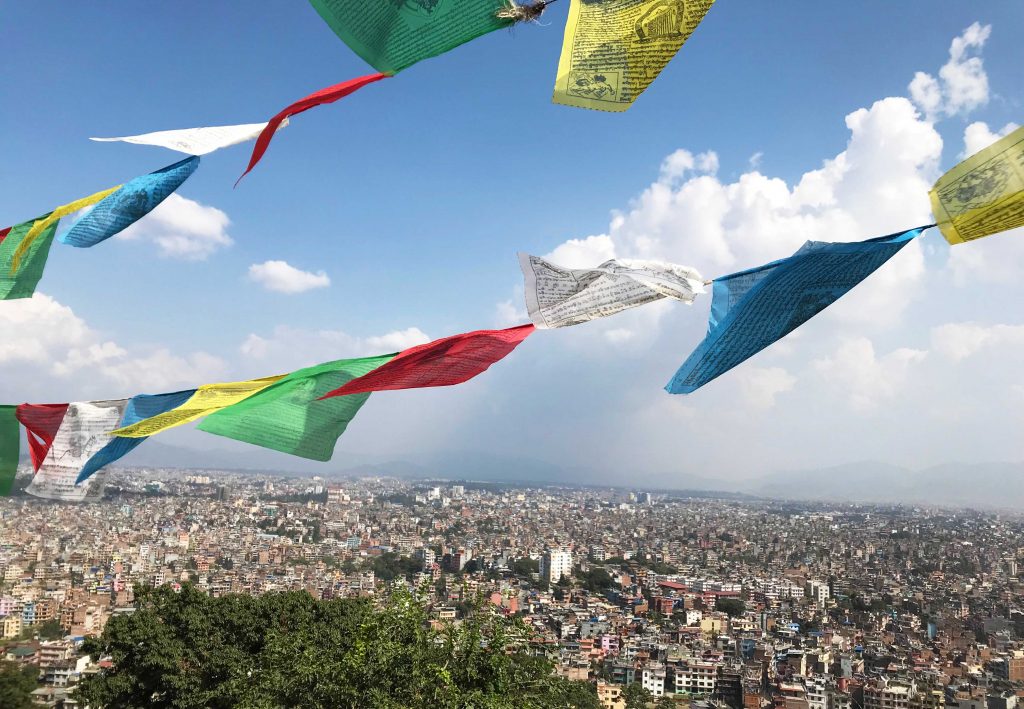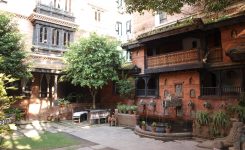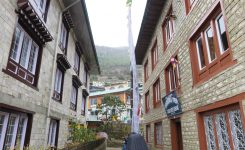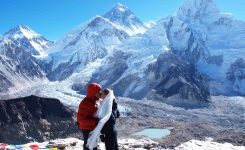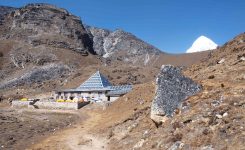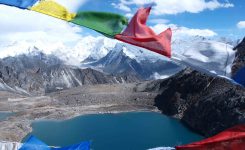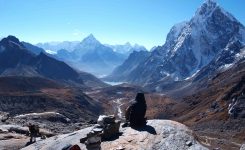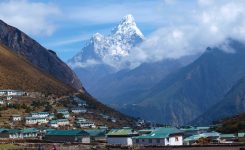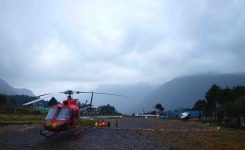Everest Base Camp, Three Passes Trek, Travel
Everest Base Camp Honeymoon: Exploring Kathmandu (Day Two)
For me, Kathmandu has always been a mysterious and exotic place that I’ve wanted to visit. But I never actually thought I would one day walk its streets (I am not even talking about the Everest Base Camp trek adventure). Nonetheless, here we were, day two of our trip – exploring Kathmandu.

On day two of our trip, we planned to take a day to get over the jetlag and explore the city before heading into the high Himalayas. It’s also easier and more convenient to get Nepalese rupees in Nepal, so we planned accordingly. I remember the jetlag being tolerable during the day, but I was super grumpy by dinner time, and it was hard to stay awake.
Right after we purchased our tickets to Nepal, I started reading up on what to expect. I found many sources suggesting it’s very dirty, noisy, and chaotic (which are all true). However, despite looking through other travellers’ photos and reading all about the city, both my husband and I experienced a “cultural shock” when we landed in Kathmandu.

Located at 1,500 meters above sea level, Kathmandu is Nepal’s capital and is the largest metropolitan city in the Himalayan region. Nepali is the official language of Nepal, but English is widely spoken and understood. As for the dominating religion, Hinduism represents 81.3% of the population’s faith, with Buddhism being 9%, Islam – 4.4%, and various other 5.2%. When you travel to the high Himalayas, this changes to the Tibetan Buddism being the dominating religion. The city air is filled with dust, smog and the smell of burning incense, and the streets are lively and colourful. Most importantly, other than aggressively trying to sell you souvenirs, the people are amicable and will always help you with directions. So despite all the chaos, the city is charming in its extraordinary way.
What to expect from the city of Kathmandu
1 It is very very polluted. The roads aren’t covered in asphalt, and the city never sleeps with thousands of motorcyclists, old cars, rickshaws, and pedestrians roaming the streets of Kathmandu. With so much traffic, the dust from the roads makes the air dry, dusty, and pretty irritating. You can see a smog cloud from the Monkey Temple (which is located at a higher elevation than Thamel).
Travel Tip: I’d recommend getting a face mask for the dust; otherwise, you may get a sore throat by the end of the day, and your allergies (if applicable) may get worse (mine did).
2 No street names. We booked a hotel in the tourist district to make it easier to get places and assuming it would be safer to walk alone. Our Lonely Planet guide also mentioned that you need a TIMS card to trek in the Himalayas and the book’s map had a location in Thamel, so we decided to give it a try… Finding the TIMS office was a nightmare. We found no street names, walked around in circles for over 30 minutes, and each time we asked for directions, the locals recommended taking a cab.
We were told the TIMS office relocated by accidentally stumbling upon a tourist centre and found out the TIMS card wasn’t necessary (however, if you show up and ask to buy it, no one will stop you).
3 No traffic lights. No traffic lights (and no street lights, so the night city compared to the day city, is unrecognizable) means that there is a lot of traffic all day long. There’s no order to the movement on the streets except for the larger intersections regulated by police officers. Due to this system, the traffic is pretty slow, so it’s safe to walk on the road’s sides. You’ll see lots of locals and tourists doing just that.
4 You have to haggle. Tourism is bread and butter for Kathmandu, and haggling is very common as the first price offered is never the best one. So it would help if you decided on what’s the price you are willing to pay, be it for a cab, a souvenir, or a rickshaw ride, and offer a price a little lower, then after some back and forth, you and the seller will come to an agreement. Also, try to have smaller bills; this way, you can say, “this is all I have, take it or leave it.” If the shop owner agrees to the price, you are both walking away with a great deal. In general, though, a bottle of water in the tourist district will be about 80 rupees, but if you walk 100 meters to the closest convenience store, you’ll buy the same water for 20 rupees – to give you an idea.
5 You can buy all you need in Kathmandu. Tourism to the Everest Base Camp is why most tourists come to Kathmandu, so naturally, you’ll see many stores selling trekking and climbing equipment. My husband and I bought everything for the trip at MEC before we left, but if you forgot something, you could easily find it in Kathmandu. I wouldn’t bet on the quality of most of the products, though. A quality down jacket and a good sleeping bag are essential for the trip, so I wouldn’t recommend buying it in Kathmandu unless you know you found a quality product. You will see lots of familiar brands (like the North Face), but there is a high chance it’s a fake. After all, they call it North Fake in Nepal. 🙂
6 There are plenty of ATMs. For our Everest Base Camp trek, we took out the money in Kathmandu before the trip. You can only withdraw 35,000 rupees per transaction (but you can take out money many times), so better check what your bank charges for international withdrawals. Mine (CIBC) charged me CAD 5.00 per transaction, and my husband used Tangerine, which cost him CAD 2.00, so shop around on a financial product comparison site.
7 Proper attire for tourists. A few blogs mentioned that it’s best to wear long pants and long sleeves in the city not to offend the locals. However, with such a high number of tourists travelling to Kathmandu every year, the locals are used to seeing travellers in shorts and t-shirts. Plus, it gets very hot. To still keep it respectful, wear knee-length shorts (or a cotton maxi skirt for women) and light coloured t-shirts. You won’t offend the locals and will not be sweating while exploring the city.
8 You have to try Momos and Dal Bhat. Momos are essentially the Nepali dumplings and were an incredible culinary discovery for me. You can get them at any restaurant in Kathmandu, and in the Himalayas in the tea houses. Dal Bhat is another fabulous vegetarian curry dish that’s pretty cheap and very filling. You can ask for momos fried or steamed if you want to be safe, go for the fried version. However, we ordered steamed momos at the Green Organic Cafe and Farmers Market and had no problem whatsoever. I highly recommend this cafe, especially the terrace, where you can relax and have a cold drink while looking over the busy streets of Thamel.
A great lunch spot in Thamel
Our DSLR camera conveniently (sigh) stopped working a day before our epic trip. So before exploring the city, we had to find a place to fix the camera. We did find a place in Thamel in the tourist district, and they repaired it the same day for CAD 70 for us. We had some time to kill, so we decided to have lunch at the Green Organic Cafe and Farmers Bar, which I would highly recommend because the food is excellent, and their terrasse is a cute place to take a break from Thamel’s hustle and bustle. We then headed to the Monkey Temple – a very satisfying trip.
At the Monkey Temple
If you ask any local on the street or at your hotel, they’ll probably recommend checking out the Durbar Square and the Monkey Temple as they’re not too far out. We started with the Durbar Square, but I wouldn’t say we were super impressed – it is very touristy and crowded. The second place we visited on that day was the Monkey Temple. Our hotel recommended it, and it was mentioned as a must-see in our Lonely Planet guide, so we decided to go, and it was totally worth it!
On our last day in Kathmandu, we visited the other two tourist must-sees: Pashupatinath and the Boudhanath Stupa. Unfortunately, we didn’t have much time to explore Kathmandu before flying back to Toronto. If you have a chance and a few extra vacation days, plan a few sightseeing tours and walk the Kathmandu streets.

As the name suggests, there are lots of monkeys at the Monkey Temple, and as adorable as they look, it’s better not to touch the monkeys as they carry disease. We were told that they would also grab what’s in your hand and run with it, but that didn’t happen to us, and I took lots of pictures of them. The Monkey Temple is also charming, and the air is clean, which is a nice break from Thamel’s crowds.
Travel Tip: We got a cab driver who insisted he wait for us while we walk around – I would advise against it and only take a cab one way. We agreed to come back in an hour and a half. You can find cabs everywhere and should always negotiate for the price (300 – 400 rupees should be ok for any destination less than 10 minutes away from Thamel). They will tell you about 800 or more. Of course, it’s up to you, but if you bargain, you get a better price.
Finally, remember to pack light
After all the sightseeing, we headed over to the camera repair shop and then a nice little rooftop patio in Thamel for dinner. The rest of the evening was about packing up for our early flight to Lukla – on a tiny airplane to the most dangerous airport in the world – the Tenzing–Hillary Airport in Lukla.
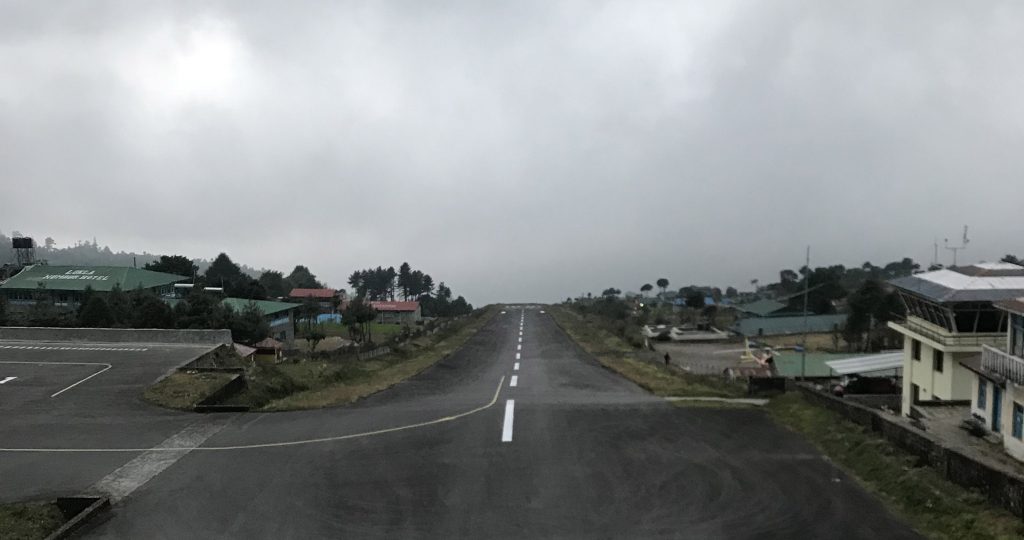
The most important tip of all is pack light! Unlike mentioned in many “trekking Nepal” blogs, most teahouses have a shower with hot water (49 – 52 C hot). You can even pay the teahouse to do your laundry if you have extra money to spare. You can also buy hand sanitizers, water, toilet paper, and alcohol along the way. So aside from a few things I wished I took from home, you can buy most of it along the way. I’d strongly recommend lightweight high-tech trekking clothing and a few test hikes before you leave to test out your pack. Keep in mind that the higher you get, the more challenging it feels to carry that same weight.
Read next:
Everest Base Camp Trek Series:
View All Posts
- Day 1 – Toronto to Kathmandu
- Day 2 – Exploring Kathmandu
- Day 3 – Kathmandu to Lukla
- Day 4 – Namche Bazaar
- Day 5 – Namche Bazaar to Tengboche
- Day 6 – Tengboche to Pangboche
- Day 7 – Pangboche to Dingboche
- Day 8 & 9 – Dingboche to Chuchung
- Day 10 – Chuchung to Lobuche (over the Kongma La Pass)
- Day 11 – Lobuche (and the Italian Pyramid)
- Day 12 – Gorakshep to Everest Base Camp
- Day 13 – To Kala Patthar and Dzongla
- Day 14 – To Dragnak (over Chola Pass)
- Day 15 – Gokyo (with Gokyo Ri ascent)
- Day 16 – Back to Namche Bazaar
- Day 17 – Namche Bazaar to Lukla
- Day 18 – Lukla to Kathmandu
- Day 19 – Kathmandu to Toronto

